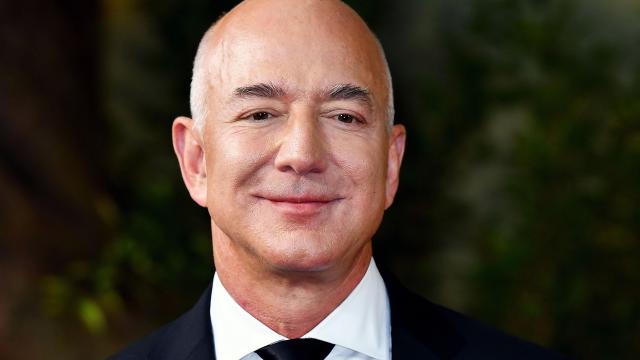Gatsby's Inspirations: Exploring The Real Men Behind The Myth

Table of Contents
The Gilded Age and the Rise of the Nouveau Riche
The Roaring Twenties, the setting of The Great Gatsby, were a period of unprecedented economic growth and social upheaval. The Gilded Age, preceding this era, laid the groundwork for the immense wealth disparity and the rise of self-made millionaires that characterized the 1920s. This era of industrialization fueled an unprecedented accumulation of wealth, creating a stark contrast between the opulent lifestyles of the newly rich and the struggles of the working class.
- The impact of industrialization: Rapid industrialization led to the creation of vast fortunes in industries like oil, steel, and railroads, dramatically altering the social landscape.
- Examples of real-life figures: Think of oil tycoons like John D. Rockefeller or railroad magnates such as Cornelius Vanderbilt – men who amassed unimaginable wealth and whose lives reflected the excesses and ambition of the Gilded Age. Their stories echo the themes of rapid social mobility and the anxieties associated with it.
- Social climbing and status anxiety: The nouveau riche, those who had recently acquired wealth, desperately sought acceptance into the established social elite, often facing significant social barriers and prejudice. This social climbing and the resulting status anxiety are central to understanding Gatsby's relentless pursuit of acceptance.
Real-Life Gatsby Prototypes: Identifying Potential Inspirations
While no single individual perfectly mirrors Jay Gatsby, several real-life figures offer compelling potential inspirations for Fitzgerald's character.
- Max Gerlach: Often cited as a significant influence, Max Gerlach was a wealthy young man known for his lavish parties and his pursuit of a woman beyond his social class. The similarities between Gerlach's life and Gatsby's are striking, particularly in their shared ambition and their pursuit of a specific woman.
- Other potential inspirations: Other figures, though less prominently discussed, likely contributed to the multifaceted portrayal of Gatsby. These include various social climbers and self-made men Fitzgerald may have encountered in his own social circles. Each individual, with their unique story of wealth acquisition and social ambition, contributed to the nuanced picture of Gatsby.
- Fitzgerald's own life experiences: Fitzgerald's own experiences with wealth, social circles, and the complexities of love and loss undoubtedly shaped his creation of Gatsby. His personal struggles and observations colored his understanding of the American Dream and its pitfalls.
The Myth of the Self-Made Man and Gatsby's Obsession
Gatsby's relentless pursuit of wealth and status directly reflects the societal ideal of the self-made man prevalent during the era. He embodies the American Dream, yet his story highlights the complexities and contradictions inherent in that ideal.
- The American Dream's complexities: Gatsby's ambition exposes the seductive yet often unattainable nature of the American Dream, revealing the potential for disillusionment and tragedy when pursuing this ideal relentlessly.
- Limitations and pitfalls: Gatsby's obsessive pursuit of wealth and social status, ultimately, proves destructive, highlighting the potential pitfalls of prioritizing material success above all else. His story is a cautionary tale about the price of ambition.
The Power of Nostalgia and Gatsby's Past
Gatsby's longing for the past and his idealized vision of his relationship with Daisy are central to his character. His obsession reveals the powerful role of nostalgia and the fleeting nature of time.
- Memory and its distortion: Gatsby's memories are selective and idealized, shaping his perception of the past and influencing his actions in the present. This distortion of memory underscores the unreliability of the past as a guide for the future.
- Psychological aspects: Gatsby's inability to let go of the past and his unwavering obsession with Daisy reveal a deep-seated psychological attachment, contributing to his tragic downfall. This psychological complexity makes his character both compelling and heartbreaking.
Conclusion
In conclusion, Jay Gatsby's enduring appeal stems from his embodiment of the hopes and anxieties of the Gilded Age and the Roaring Twenties. The real-life inspirations behind his character, from the historical context of the nouveau riche to potential prototypes like Max Gerlach, reveal the multifaceted nature of the American Dream and the complexities of identity. Gatsby's story continues to resonate because it explores timeless themes of ambition, love, loss, and the elusive nature of happiness. To further understand Gatsby's Inspirations, delve deeper into the historical context of the Roaring Twenties and explore the lives of the real people who may have inspired this iconic character. Further reading on the Gilded Age and biographies of potential Gatsby prototypes will enrich your understanding of this enduring literary masterpiece.

Featured Posts
-
 Ksiaze Andrzej I Masazystka Szczegoly Szokujacego Spotkania
May 12, 2025
Ksiaze Andrzej I Masazystka Szczegoly Szokujacego Spotkania
May 12, 2025 -
 Who Should Be The Next James Bond Jeff Bezos Asks Fans Respond
May 12, 2025
Who Should Be The Next James Bond Jeff Bezos Asks Fans Respond
May 12, 2025 -
 Mueller Open Voor Nieuwe Uitdaging Na Bayern Muenchen
May 12, 2025
Mueller Open Voor Nieuwe Uitdaging Na Bayern Muenchen
May 12, 2025 -
 The Unexpected Alliance Exploring Apples Influence On Googles Success
May 12, 2025
The Unexpected Alliance Exploring Apples Influence On Googles Success
May 12, 2025 -
 Duplantis Diamond League Debut A New Era In Pole Vault
May 12, 2025
Duplantis Diamond League Debut A New Era In Pole Vault
May 12, 2025
Latest Posts
-
 2025 Mtv Movie And Tv Awards Officially Cancelled
May 12, 2025
2025 Mtv Movie And Tv Awards Officially Cancelled
May 12, 2025 -
 The Future Of Mtv After The Cbs Vma Simulcast
May 12, 2025
The Future Of Mtv After The Cbs Vma Simulcast
May 12, 2025 -
 Vma Simulcast On Cbs Did Mtv Lose Its Grip On Music Awards
May 12, 2025
Vma Simulcast On Cbs Did Mtv Lose Its Grip On Music Awards
May 12, 2025 -
 Mtv Movie And Tv Awards Cancelled For 2025 Official Confirmation
May 12, 2025
Mtv Movie And Tv Awards Cancelled For 2025 Official Confirmation
May 12, 2025 -
 Jessica Simpsons Daughter Birdie 6 Matches Mom In Cute Yellow Swimsuits
May 12, 2025
Jessica Simpsons Daughter Birdie 6 Matches Mom In Cute Yellow Swimsuits
May 12, 2025
